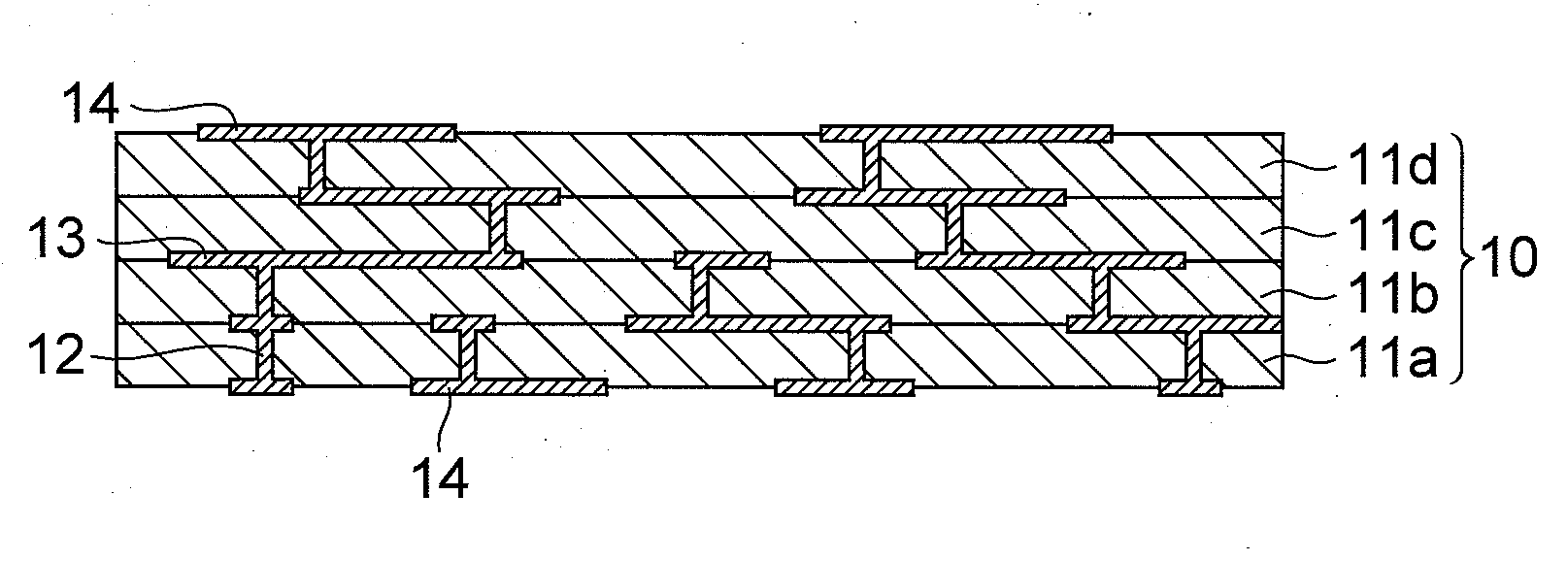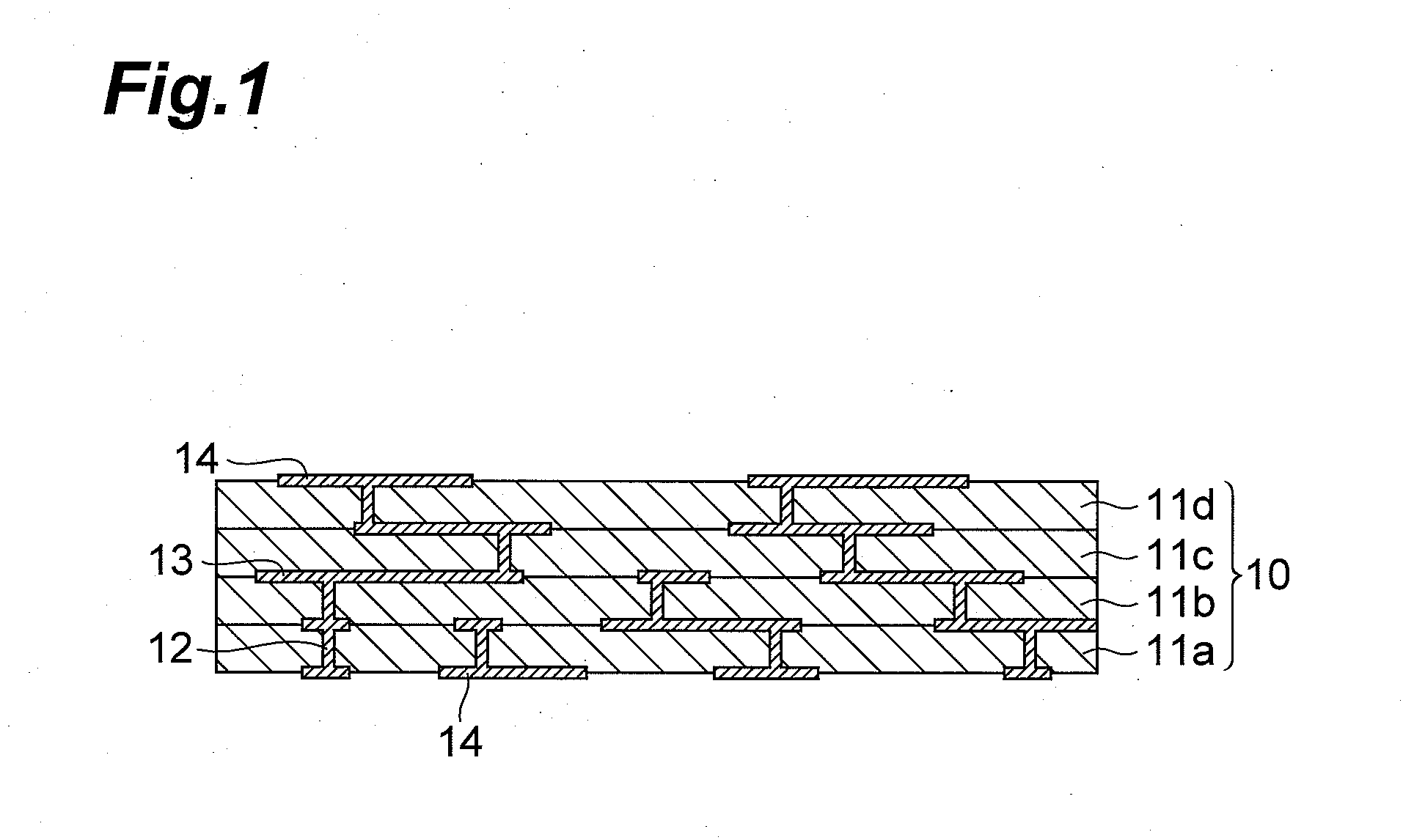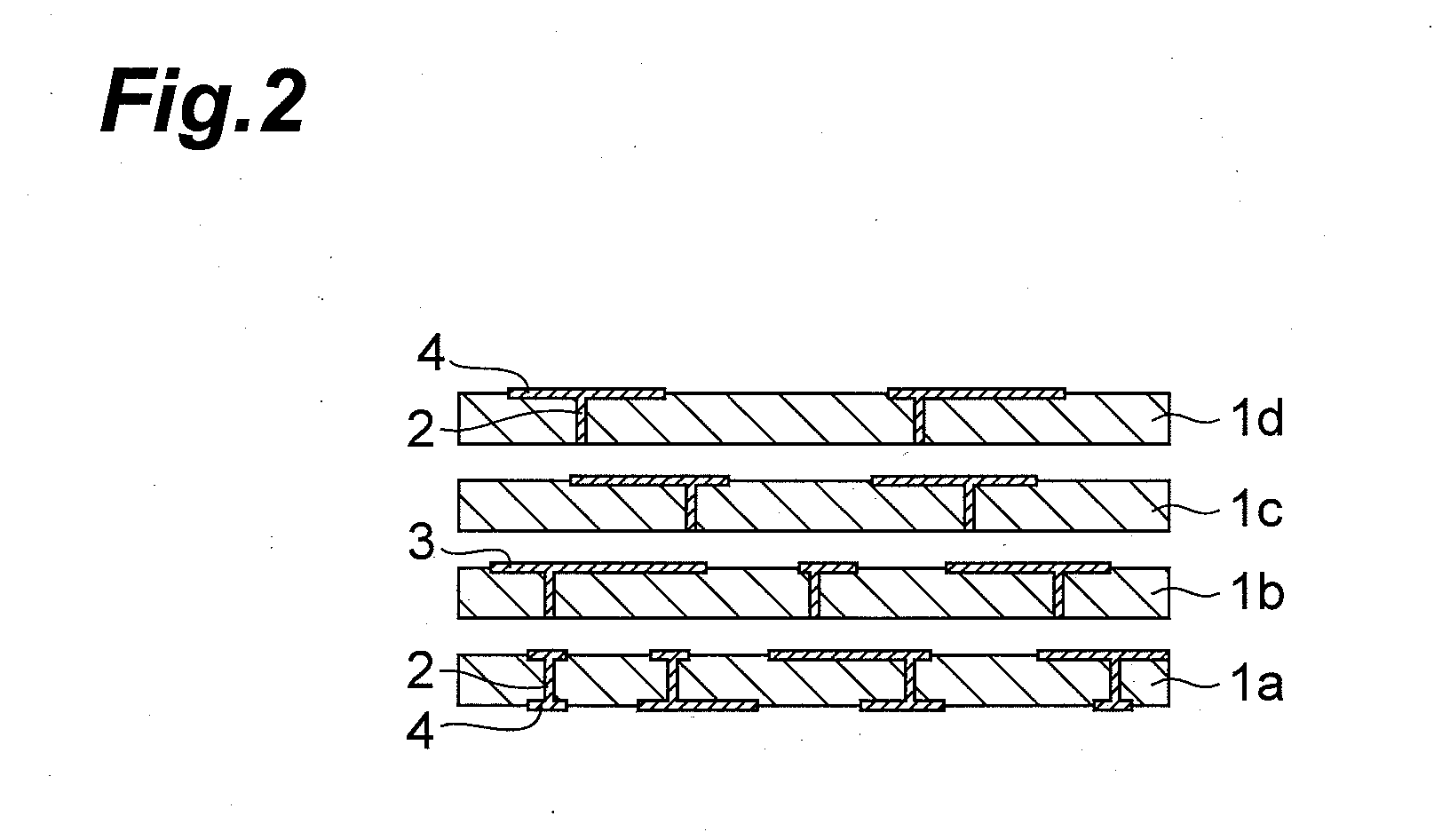Glass ceramic substrate
a technology of glass ceramics and substrates, applied in the direction of printed circuit aspects, transportation and packaging, layered products, etc., can solve the problems of insufficient strength of prior art wiring substrates, needing further improvement, etc., to suppress local concentration of stress, improve strength, and improve dispersion and orientation
- Summary
- Abstract
- Description
- Claims
- Application Information
AI Technical Summary
Benefits of technology
Problems solved by technology
Method used
Image
Examples
example 1
[0067]A glass powder (a crystallized glass powder depositing diopside, consisting primarily of SiO2, CaO, MgO, Al2O3, and CuO) and a plate-like alumina filler were provided. Table 1 shows the average plate diameter, average thickness, and average aspect ratio of the plate-like alumina filler.
[0068]The glass powder (64.5 g) and plate-like alumina filler (35.5 g), as provided above, and an organic vehicle (61 g) were mixed to prepare a dielectric paste.
[0069]The composition of the organic vehicle was as follows: acrylic resin: 19.4 g; toluene: 59.1 g; ethanol: 3 g; and plasticizer (BPBG): 6.5 g.
[0070]Substrate green sheets were formed by forming a film of the prepared dielectric paste on a polyethylene terephthalate film using doctor blading.
[0071]Next, the substrate green sheets were stacked on one another and pressed at 74 MPa, after which the stack was fired in air for 1 hour at 900° C., thus giving a glass ceramic multilayer substrate. The thickness of the fired glass ceramic mult...
example 4
[0075]A glass ceramic multilayer substrate was prepared in the same manner as in Example 1, except that firing was performed with a green sheet stack for the substrate being sandwiched between shrinkage-inhibiting green sheets containing tridymite, and the bending strength was measured. Table 2 shows the average plate diameter, average thickness, and average aspect ratio of the plate-like alumina filler; and the measured result of the average bending strength. The thickness of the fired glass ceramic multilayer substrates was 0.2 mm, and the content of the plate-like alumina filler in glass ceramic multilayer substrate was 30% by volume based on the total amount of the glass component and plate-like alumina filler.
example 7
[0077]A glass ceramic multilayer substrate was prepared in the same manner as in Example 5, except that a material containing SiO2, B2O3, Al2O3, and SrO was used as a glass powder, and the bending strength was measured.
[0078]Table 2 shows the average plate diameter, average thickness, and average aspect ratio of the plate-like alumina filler; and the measured result of the average bending strength. The thickness of the fired glass ceramic multilayer substrate was 0.2 mm, and the content of the plate-like alumina filler in the glass ceramic multilayer substrate was 30% by volume based on the total amount of the glass component and plate-like alumina filler.
TABLE 2Comp.Comp.Comp.Comp.Ex. 4Ex. 5Ex. 6Ex. 7Ex. 5Ex. 6Ex. 7Ex. 8Average Plate2.05.07.05.00.62.05.010.0Diameter (μm)Average0.040.070.100.070.060.080.200.30Thickness(μm)Average50.071.470.071.410.025.025.033.0Aspect RatioAverage430550490405360370390360BendingStrength (MPa)
PUM
| Property | Measurement | Unit |
|---|---|---|
| diameter | aaaaa | aaaaa |
| average aspect ratio | aaaaa | aaaaa |
| average aspect ratio | aaaaa | aaaaa |
Abstract
Description
Claims
Application Information
 Login to View More
Login to View More - R&D
- Intellectual Property
- Life Sciences
- Materials
- Tech Scout
- Unparalleled Data Quality
- Higher Quality Content
- 60% Fewer Hallucinations
Browse by: Latest US Patents, China's latest patents, Technical Efficacy Thesaurus, Application Domain, Technology Topic, Popular Technical Reports.
© 2025 PatSnap. All rights reserved.Legal|Privacy policy|Modern Slavery Act Transparency Statement|Sitemap|About US| Contact US: help@patsnap.com



